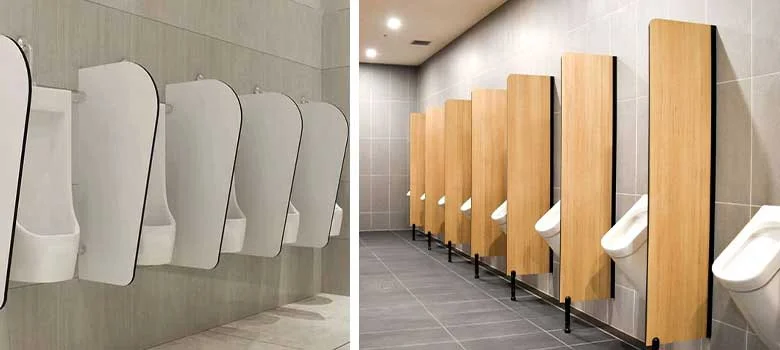The Significance of Using Urinal Dividers
Public toilets are usually an evil necessity, an anxiety-filled reality.
We have all been there, trapped in a confined, unclean, and highly exposed environment. This is where urinal dividers come in.
These tend to be modest fixtures, the unsung heroes of the public bathroom quietly working to make the environment cleaner and more comfortable for all.
But their importance goes beyond just visual barriers. Let's dig deeper into why these partitions matter.
The Hygiene Factor: Keeping It Clean and Private
Cleanliness in public toilets is not a luxury; it is a necessity. The lack of the so-called urinal dividers may be viewed as an invitation to hygiene nightmares, which can be not only unappealing but also damaging for the good of one's health.
1. Reducing Splash and Cross-Contamination
Urinal dividers are not merely partitions between two persons but a barrier that assists in reducing the transmission of germs.
Think about it: when dividers are in place, there's less opportunity for splashback or aerosolized particles to travel between users. This reduces the risk of cross-contamination, keeping everyone a bit safer in an environment that's already rife with bacteria.
Plus, they give that much-needed psychological comfort that comes with a little extra space, making the whole experience feel more controlled and contained.
2. Ease of Maintenance by Staff
It is not exactly anyone's dream to clean public toilets, but urinal partitions can make the job a lot less daunting.
By partitioning each urinal, cleaners can focus their efforts on one unit at a time, without the fear of spreading contaminants to neighboring areas.
This structured approach might just be what is needed for a more thorough and intensive cleaning session every time, providing a hygienic restroom environment constantly.
The dividers themselves, often made of easy-to-clean materials, act as an extra layer of protection to catch any spills and splashes alike, which would otherwise add to an overall sense of uncleanliness.
Psychological Comfort: Matters of Privacy
Besides hygiene, there is psychological comfort, which is often overlooked. Many already find public restrooms anxiety-prone, but with no privacy whatsoever, a quick trip could turn into a stressful ordeal. Here's how urinal dividers come in.
1. Reducing Social Anxiety and Discomfort
Ever get that tingle in the air of being watched or judged in a public restroom? You are not alone.
For many, this leads to "pee-shyness" or paruresis, which is an anxiety disorder around people where it becomes hard to pee alongside others. The dividers on the urinals provide that hint of privacy within an otherwise communal area, enabling users to feel less exposed and hence, at ease.
A little barrier can make a world of difference to a busy environment that offers little in terms of privacy.
2. Promoting Correct Use and Minimizing Accidents
Let's be realistic: without dividers, people get sloppy. Dividers set defined zones that encourage, subconsciously, correct use of the facilities.
People have a tendency to be cleaner when they feel enveloped within a private space, making less of a general mess and overall a much cleaner bathroom for everyone involved, from the casual visitor to the harried maintenance staff tasked with cleaning up afterward.
Conclusion
More than just a strip of metal or plastic, the urinal dividers serve as fundamental fixtures that establish optimum standards of sanitation and personal space in public comfort rooms.
While minimizing accrual, promoting proper use, and providing the much-needed sense of one's space, these partitions become undeniably essential in further enhancing the general experience the public has in restrooms.
The next time one enters a restroom with these dividers, appreciation should be reserved for such silent sentinels of hygiene and comfort.



